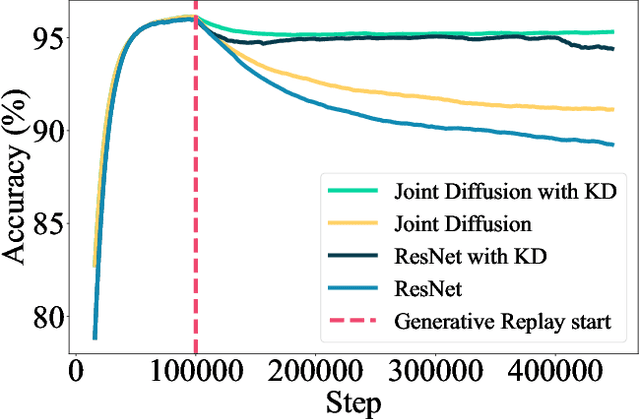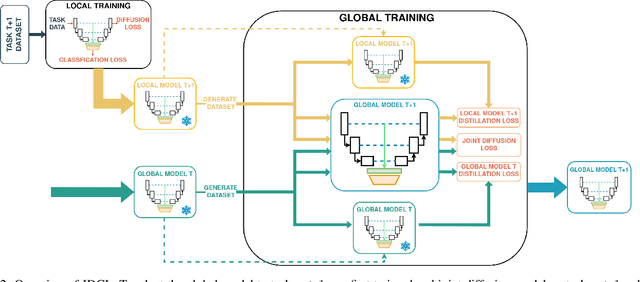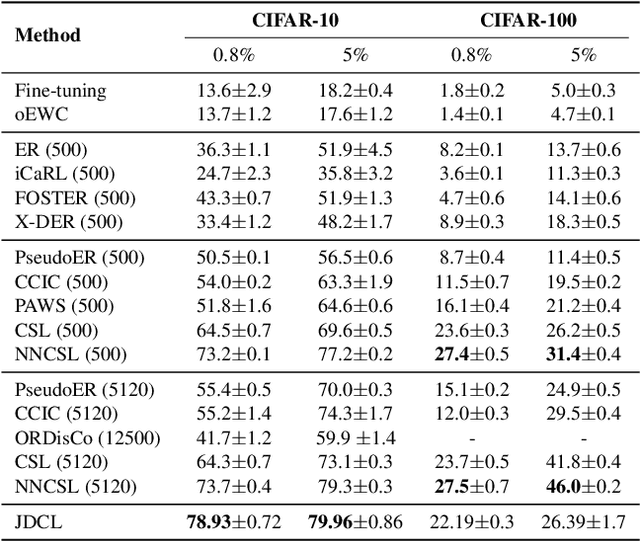Kamil Deja
for the ALICE collaboration
ExpertSim: Fast Particle Detector Simulation Using Mixture-of-Generative-Experts
Aug 28, 2025Abstract:Simulating detector responses is a crucial part of understanding the inner workings of particle collisions in the Large Hadron Collider at CERN. Such simulations are currently performed with statistical Monte Carlo methods, which are computationally expensive and put a significant strain on CERN's computational grid. Therefore, recent proposals advocate for generative machine learning methods to enable more efficient simulations. However, the distribution of the data varies significantly across the simulations, which is hard to capture with out-of-the-box methods. In this study, we present ExpertSim - a deep learning simulation approach tailored for the Zero Degree Calorimeter in the ALICE experiment. Our method utilizes a Mixture-of-Generative-Experts architecture, where each expert specializes in simulating a different subset of the data. This allows for a more precise and efficient generation process, as each expert focuses on a specific aspect of the calorimeter response. ExpertSim not only improves accuracy, but also provides a significant speedup compared to the traditional Monte-Carlo methods, offering a promising solution for high-efficiency detector simulations in particle physics experiments at CERN. We make the code available at https://github.com/patrick-bedkowski/expertsim-mix-of-generative-experts.
SAeUron: Interpretable Concept Unlearning in Diffusion Models with Sparse Autoencoders
Jan 31, 2025



Abstract:Diffusion models, while powerful, can inadvertently generate harmful or undesirable content, raising significant ethical and safety concerns. Recent machine unlearning approaches offer potential solutions but often lack transparency, making it difficult to understand the changes they introduce to the base model. In this work, we introduce SAeUron, a novel method leveraging features learned by sparse autoencoders (SAEs) to remove unwanted concepts in text-to-image diffusion models. First, we demonstrate that SAEs, trained in an unsupervised manner on activations from multiple denoising timesteps of the diffusion model, capture sparse and interpretable features corresponding to specific concepts. Building on this, we propose a feature selection method that enables precise interventions on model activations to block targeted content while preserving overall performance. Evaluation with the competitive UnlearnCanvas benchmark on object and style unlearning highlights SAeUron's state-of-the-art performance. Moreover, we show that with a single SAE, we can remove multiple concepts simultaneously and that in contrast to other methods, SAeUron mitigates the possibility of generating unwanted content, even under adversarial attack. Code and checkpoints are available at: https://github.com/cywinski/SAeUron.
Mediffusion: Joint Diffusion for Self-Explainable Semi-Supervised Classification and Medical Image Generation
Nov 12, 2024Abstract:We introduce Mediffusion -- a new method for semi-supervised learning with explainable classification based on a joint diffusion model. The medical imaging domain faces unique challenges due to scarce data labelling -- insufficient for standard training, and critical nature of the applications that require high performance, confidence, and explainability of the models. In this work, we propose to tackle those challenges with a single model that combines standard classification with a diffusion-based generative task in a single shared parametrisation. By sharing representations, our model effectively learns from both labeled and unlabeled data while at the same time providing accurate explanations through counterfactual examples. In our experiments, we show that our Mediffusion achieves results comparable to recent semi-supervised methods while providing more reliable and precise explanations.
Joint Diffusion models in Continual Learning
Nov 12, 2024



Abstract:In this work, we introduce JDCL - a new method for continual learning with generative rehearsal based on joint diffusion models. Neural networks suffer from catastrophic forgetting defined as abrupt loss in the model's performance when retrained with additional data coming from a different distribution. Generative-replay-based continual learning methods try to mitigate this issue by retraining a model with a combination of new and rehearsal data sampled from a generative model. In this work, we propose to extend this idea by combining a continually trained classifier with a diffusion-based generative model into a single - jointly optimized neural network. We show that such shared parametrization, combined with the knowledge distillation technique allows for stable adaptation to new tasks without catastrophic forgetting. We evaluate our approach on several benchmarks, where it outperforms recent state-of-the-art generative replay techniques. Additionally, we extend our method to the semi-supervised continual learning setup, where it outperforms competing buffer-based replay techniques, and evaluate, in a self-supervised manner, the quality of trained representations.
There and Back Again: On the relation between noises, images, and their inversions in diffusion models
Oct 31, 2024Abstract:Denoising Diffusion Probabilistic Models (DDPMs) achieve state-of-the-art performance in synthesizing new images from random noise, but they lack meaningful latent space that encodes data into features. Recent DDPM-based editing techniques try to mitigate this issue by inverting images back to their approximated staring noise. In this work, we study the relation between the initial Gaussian noise, the samples generated from it, and their corresponding latent encodings obtained through the inversion procedure. First, we interpret their spatial distance relations to show the inaccuracy of the DDIM inversion technique by localizing latent representations manifold between the initial noise and generated samples. Then, we demonstrate the peculiar relation between initial Gaussian noise and its corresponding generations during diffusion training, showing that the high-level features of generated images stabilize rapidly, keeping the spatial distance relationship between noises and generations consistent throughout the training.
Low-Rank Continual Personalization of Diffusion Models
Oct 07, 2024Abstract:Recent personalization methods for diffusion models, such as Dreambooth, allow fine-tuning pre-trained models to generate new concepts. However, applying these techniques across multiple tasks in order to include, e.g., several new objects or styles, leads to mutual interference between their adapters. While recent studies attempt to mitigate this issue by combining trained adapters across tasks after fine-tuning, we adopt a more rigorous regime and investigate the personalization of large diffusion models under a continual learning scenario, where such interference leads to catastrophic forgetting of previous knowledge. To that end, we evaluate the na\"ive continual fine-tuning of customized models and compare this approach with three methods for consecutive adapters' training: sequentially merging new adapters, merging orthogonally initialized adapters, and updating only relevant parameters according to the task. In our experiments, we show that the proposed approaches mitigate forgetting when compared to the na\"ive approach.
Generative Diffusion Models for Fast Simulations of Particle Collisions at CERN
Jun 05, 2024Abstract:In High Energy Physics simulations play a crucial role in unraveling the complexities of particle collision experiments within CERN's Large Hadron Collider. Machine learning simulation methods have garnered attention as promising alternatives to traditional approaches. While existing methods mainly employ Variational Autoencoders (VAEs) or Generative Adversarial Networks (GANs), recent advancements highlight the efficacy of diffusion models as state-of-the-art generative machine learning methods. We present the first simulation for Zero Degree Calorimeter (ZDC) at the ALICE experiment based on diffusion models, achieving the highest fidelity compared to existing baselines. We perform an analysis of trade-offs between generation times and the simulation quality. The results indicate a significant potential of latent diffusion model due to its rapid generation time.
Deep Generative Models for Proton Zero Degree Calorimeter Simulations in ALICE, CERN
Jun 05, 2024Abstract:Simulating detector responses is a crucial part of understanding the inner-workings of particle collisions in the Large Hadron Collider at CERN. The current reliance on statistical Monte-Carlo simulations strains CERN's computational grid, underscoring the urgency for more efficient alternatives. Addressing these challenges, recent proposals advocate for generative machine learning methods. In this study, we present an innovative deep learning simulation approach tailored for the proton Zero Degree Calorimeter in the ALICE experiment. Leveraging a Generative Adversarial Network model with Selective Diversity Increase loss, we directly simulate calorimeter responses. To enhance its capabilities in modeling a broad range of calorimeter response intensities, we expand the SDI-GAN architecture with additional regularization. Moreover, to improve the spatial fidelity of the generated data, we introduce an auxiliary regressor network. Our method offers a significant speedup when comparing to the traditional Monte-Carlo based approaches.
Particle physics DL-simulation with control over generated data properties
May 22, 2024Abstract:The research of innovative methods aimed at reducing costs and shortening the time needed for simulation, going beyond conventional approaches based on Monte Carlo methods, has been sparked by the development of collision simulations at the Large Hadron Collider at CERN. Deep learning generative methods including VAE, GANs and diffusion models have been used for this purpose. Although they are much faster and simpler than standard approaches, they do not always keep high fidelity of the simulated data. This work aims to mitigate this issue, by providing an alternative solution to currently employed algorithms by introducing the mechanism of control over the generated data properties. To achieve this, we extend the recently introduced CorrVAE, which enables user-defined parameter manipulation of the generated output. We adapt the model to the problem of particle physics simulation. The proposed solution achieved promising results, demonstrating control over the parameters of the generated output and constituting an alternative for simulating the ZDC calorimeter in the ALICE experiment at CERN.
Particle identification with machine learning from incomplete data in the ALICE experiment
Mar 26, 2024



Abstract:The ALICE experiment at the LHC measures properties of the strongly interacting matter formed in ultrarelativistic heavy-ion collisions. Such studies require accurate particle identification (PID). ALICE provides PID information via several detectors for particles with momentum from about 100 MeV/c up to 20 GeV/c. Traditionally, particles are selected with rectangular cuts. Acmuch better performance can be achieved with machine learning (ML) methods. Our solution uses multiple neural networks (NN) serving as binary classifiers. Moreover, we extended our particle classifier with Feature Set Embedding and attention in order to train on data with incomplete samples. We also present the integration of the ML project with the ALICE analysis software, and we discuss domain adaptation, the ML technique needed to transfer the knowledge between simulated and real experimental data.
 Add to Chrome
Add to Chrome Add to Firefox
Add to Firefox Add to Edge
Add to Edge